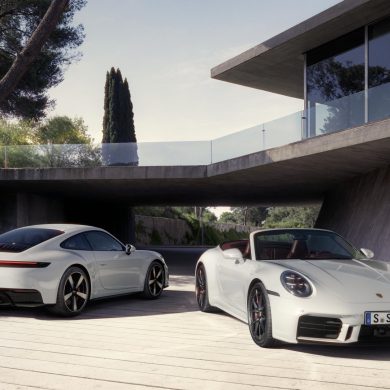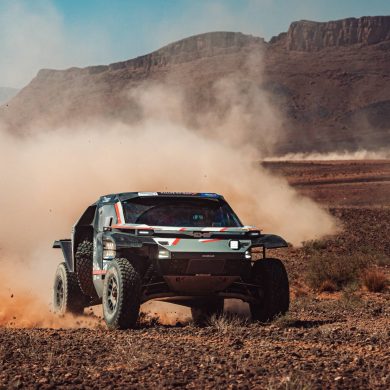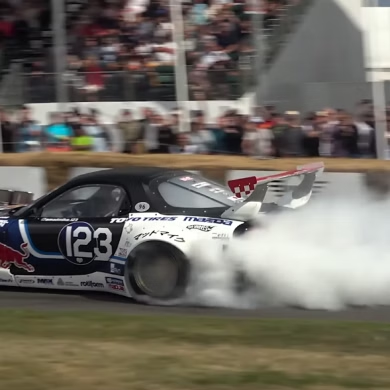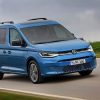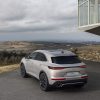Let's talk about excessive, insane vehicles. Sure, you've got a lot on your mind. As of today, however, a place among them is occupied by the Ford Pro Electric SuperVan that the company brought down to the 2022 Goodwood Festival of Speed. "How insane can a van be?" you'll be thinking, and rightly so. The numbers will give you the picture: 2,000 horsepower in a four-wheel-drive electric Transit, which makes the sprint to 60 mph from a standstill in less than 2 seconds. It has 5 drive modes, including track, drift, and... Eco. Eco. You want more?
Needless to say, the Ford Pro Electric SuperVan is the fastest, most powerful, most efficient van in Ford's history. At the same time, the impressive demonstration vehicle comes to underscore the company's longstanding commitment to electrification. But what is this Apocalypse monster that Ford has... revealed?
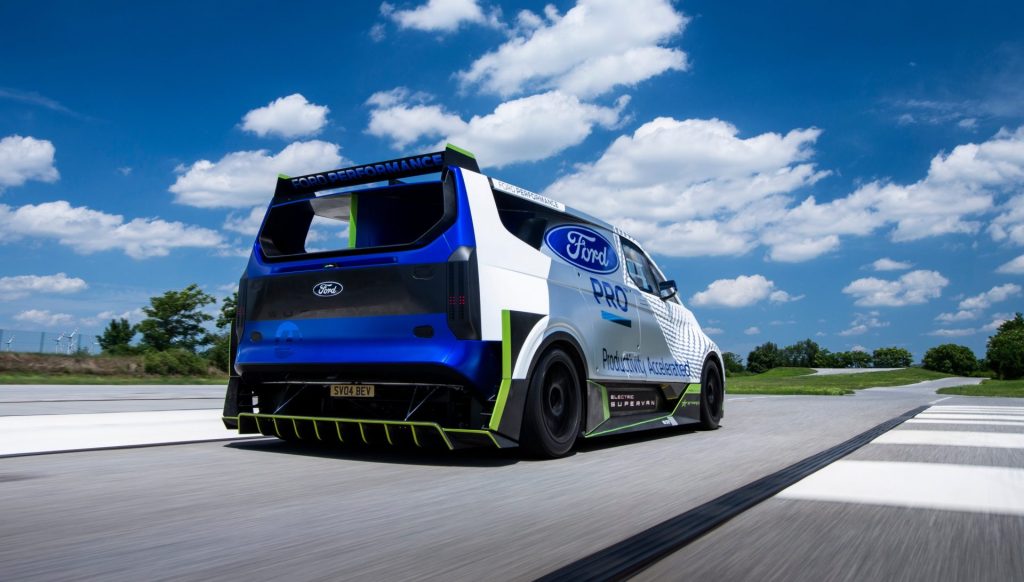
Its technical characteristics
The four electric motors, a 50 kWh liquid-cooled battery and a specially designed control system contribute to the Ford Pro Electric SuperVan producing around 2,000 hp, ensuring 0-100 km/h acceleration in under two seconds. Performance from a purpose-built, track-ready chassis, which includes many components from the recently revealed E-Transit Custom 1 - the first all-electric version of Europe's most popular 2.3 van - is supported both by Ford 4's SYNC touchscreen technology via touchscreen technology derived from the company's production models, as well as additional functionality to control the unique capabilities of the Electric SuperVan.
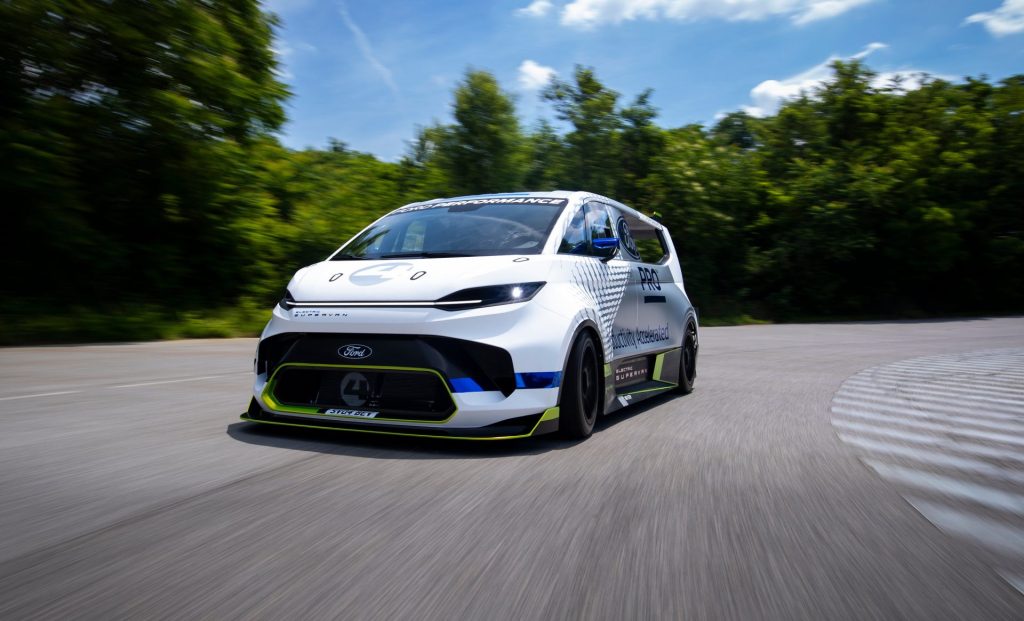
Upgraded connectivity keeps the driver informed and allows real-time data transmission that helps to remotely manage the vehicle and optimise its performance. Just like in-vehicle services that can accelerate the productivity of more than 125,000 Ford Pro customers across Europe. The Electric SuperVan also features selectable drive modes and regenerative braking technologies similar to those found in Ford's production electric models.
The impressive, all-electric demonstration vehicle was developed in secret by Ford Performance and the racing and electrified rally specialists at STARD in Austria, while the exterior design was the responsibility of the Ford Design team in Cologne, Germany.
And yet, there was a SuperVan from 1971
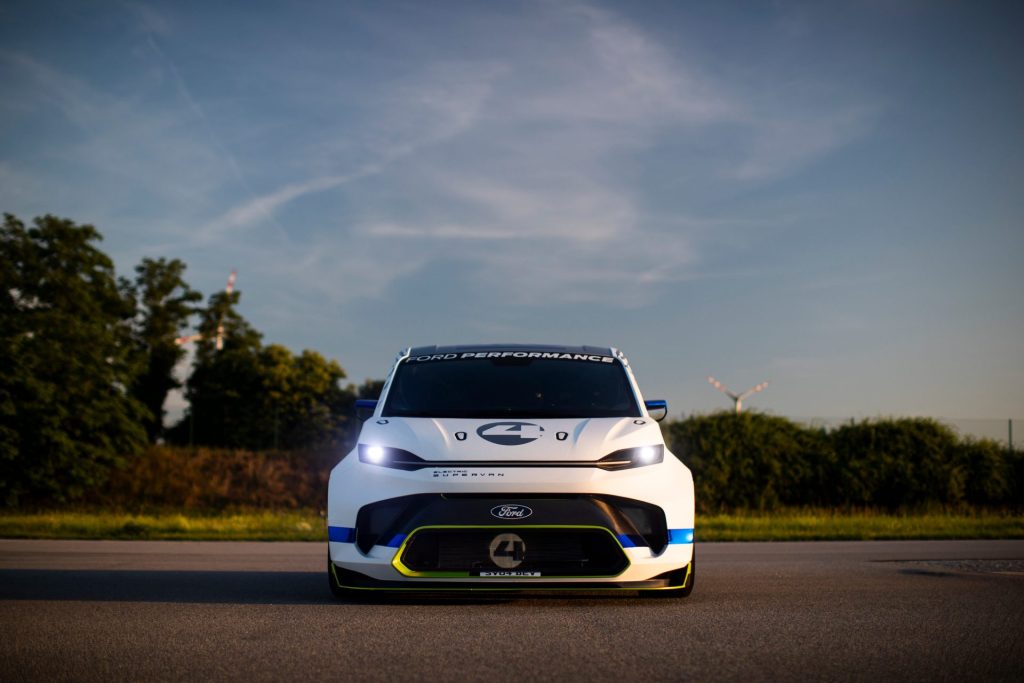
Ford's first SuperVan was unveiled in 1971, featuring an engine installed in the centre of the bodywork derived from the Ford GT40 racing car that won at Le Mans. And so the Transit Mk. 1 was created, which was unlike any other. This formula continued with the SuperVan 2, in which a unique fibreglass version of the Transit Mk. 2 bodywork 'clad' its monocoque chassis, as well as the 590bhp Cosworth V8 engine used by Ford's C100 racer. This vehicle was later reborn as the SuperVan 3, following the pattern of the updated Transit Mk. 3. Power was provided by the 650 bhp Cosworth HB engine used by the Formula 1 cars of the day.
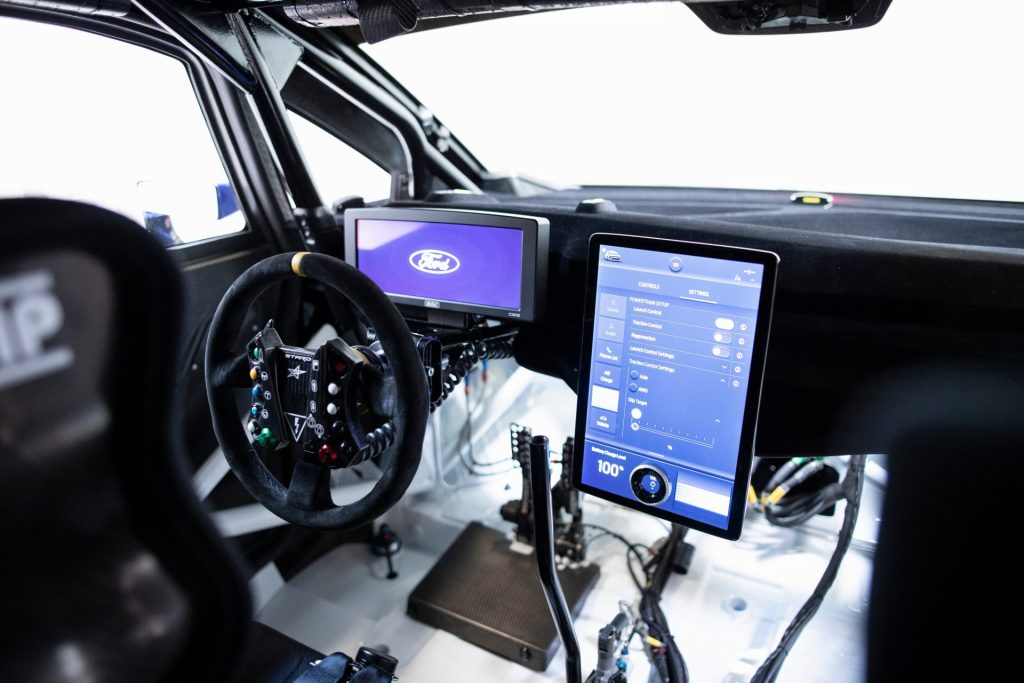
"Ford Pro is all about accelerating productivity for our customers - so what better way than to create a new, electric SuperVan that demonstrates the power of electrification and connectivity," said Hans Schep, general manager, Ford Pro, Europe. "This incredible demonstration vehicle takes the advanced engineering and distinctive looks of E-Transit Custom to a whole new level. At the same time, it is a testament to the power of the Ford Pro connected services ecosystem."
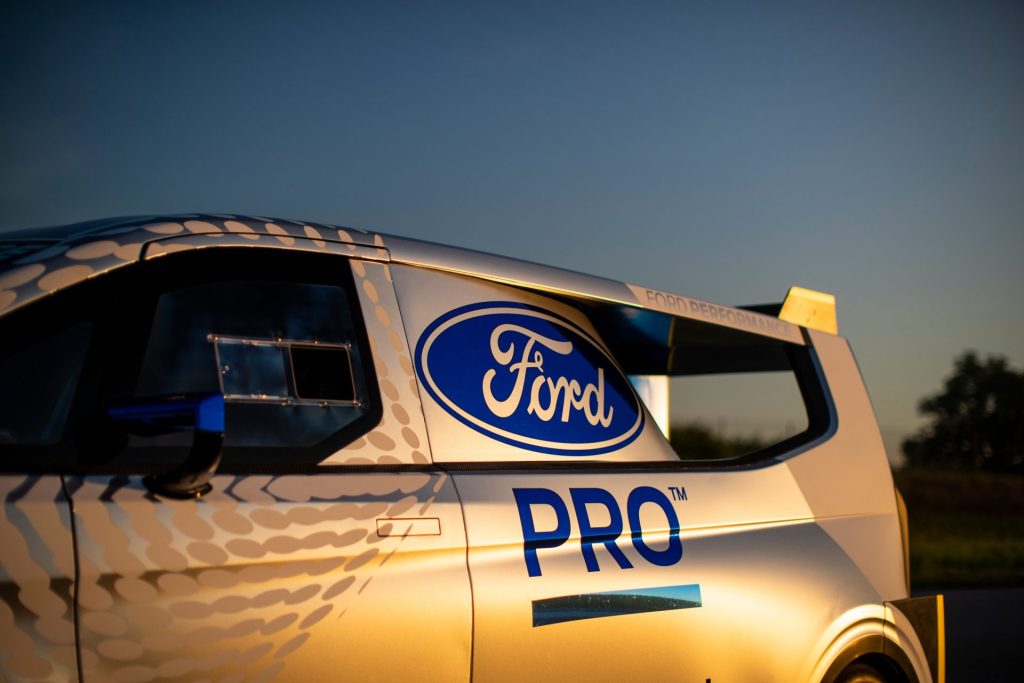
The Ford Pro Electric SuperVan was unveiled at the Goodwood Festival of Speed, where Ford's next-generation performance pick-up, the new Ranger Raptor, also made its dynamic European debut. 5 Demonstrating the capabilities of the electric SuperVan, behind the wheel at Goodwood was multi-champion racing driver and multiple record holder in electric race cars, Romain Dumas.
A... transformed E-Transit Custom
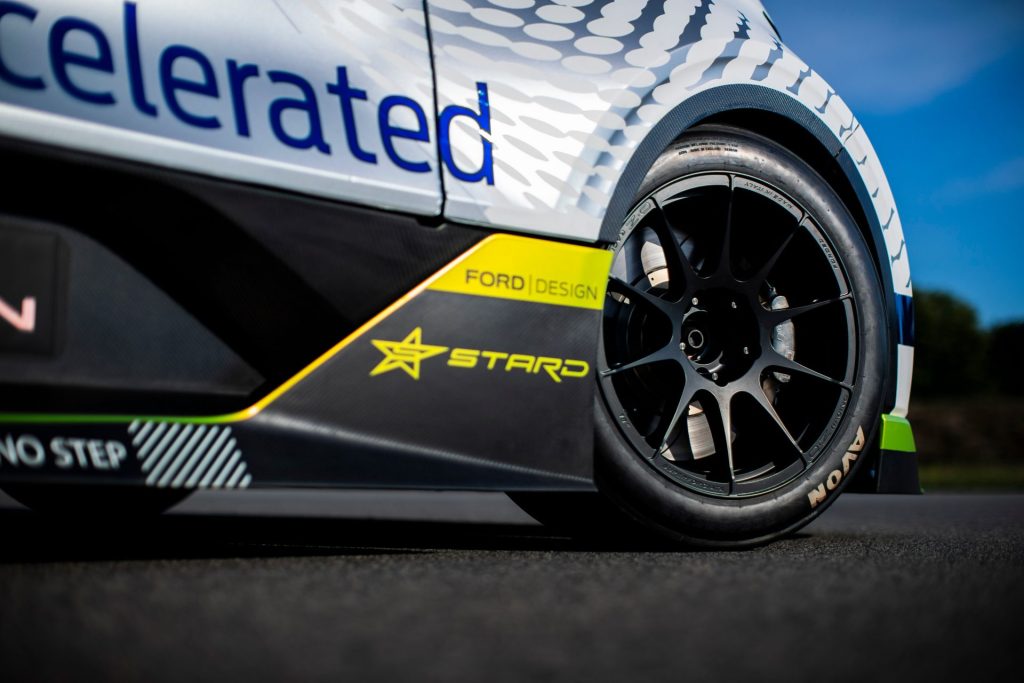
The Ford Pro Electric SuperVan is a one-off demonstration vehicle, giving Ford Design the freedom to create a vehicle with a 'wild' look that attracts attention and reflects its extreme performance. Its odd wheel arches, muscular body styling and unique colour schemes are instrumental in creating an extreme expression that has the Transit as its benchmark. For its part, the all-electric drivetrain offered the development team plenty of freedom given the fewer cooling constraints than an internal combustion engine.
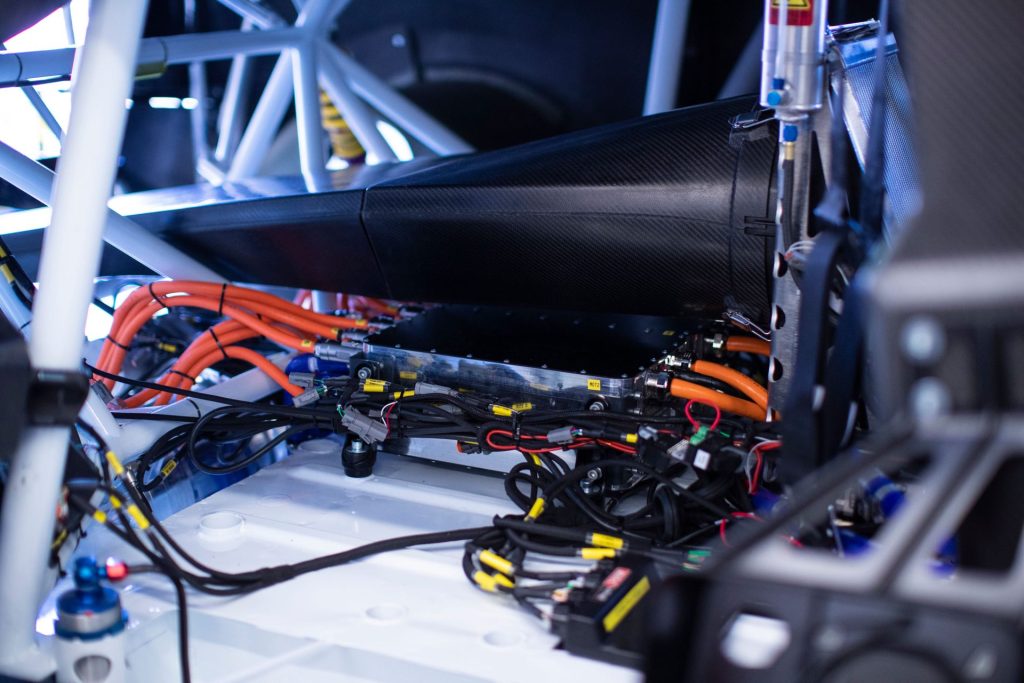
Built to racing specification, the demonstration vehicle combines the E-Transit Custom floor with a steel space frame and low-weight body panels made of synthetic materials. A specially developed liquid-cooled battery with a capacity of 50 kWh is positioned for optimum mass distribution and a low centre of gravity, while at the same time it can be fully recharged in around 45 minutes using a standard electric vehicle rapid charger. The driver can access charging and battery-related information via the in-cab touchscreen display.
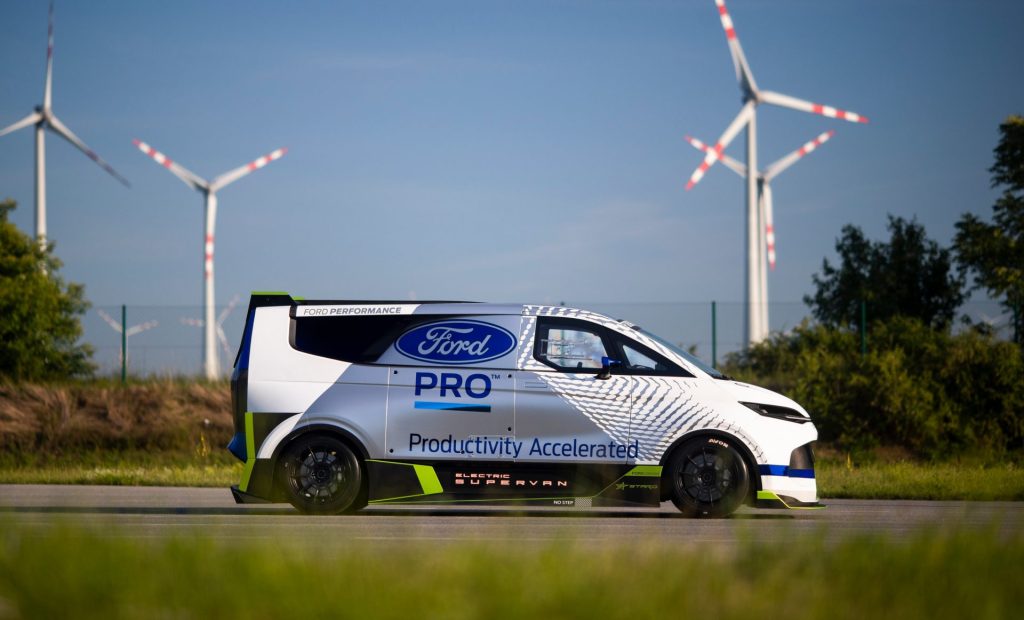
The four electric motors deliver a combined output of around 2,000 hp, transferring power to all four wheels. With 0-100 km/h acceleration of under 2 seconds, this is the fastest SuperVan in history - but also the cleanest.
Like any van, the Electric SuperVan has a loading area directly behind the driver. For the occasion, a side door makes it easy to load and unload items, with Ford even developing a safe electromagnetic system for opening and closing it, controlled via the SYNC screen.
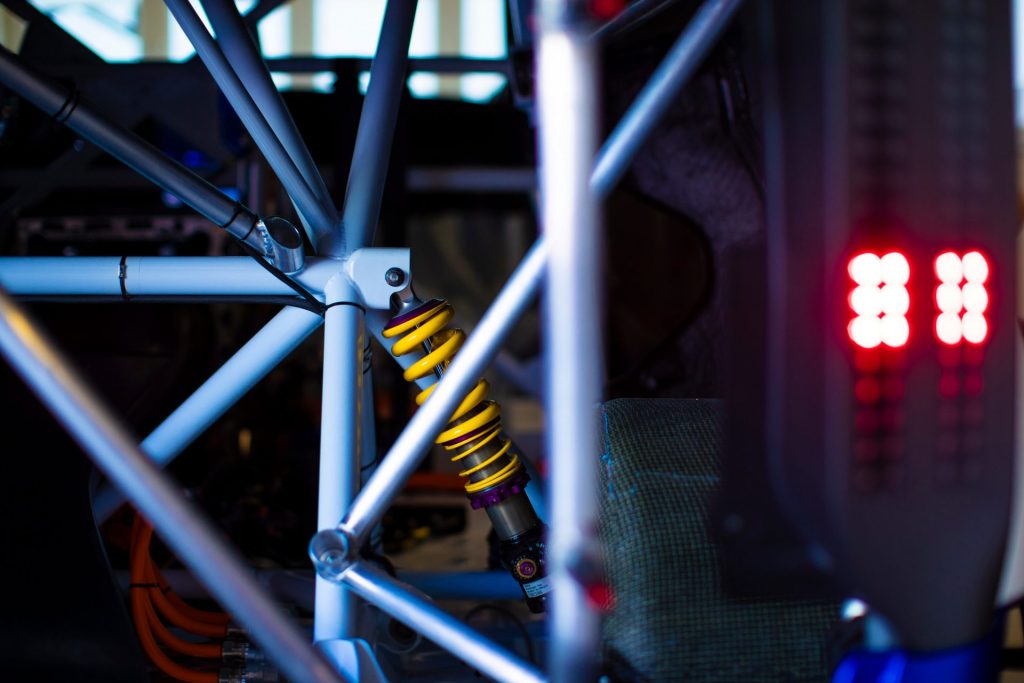
A suite of built-in cameras can provide audiences around the world with footage of the SuperVan's spectacular action scenes. At the same time, just as in the Ford E-Transit, the driver can view images of the surrounding area on the in-cab display and alternate between them to position the vehicle in the desired position.
The racing influences of Ford Performance and STARD are immediately apparent in the new SuperVan, with the strikingly sculpted front splitter, side skirts and rear diffuser alluding to racing designs. At the same time, the distinctive aerodynamic cuts and aggressive wing 'flow' towards the rear wing to develop the necessary vertical force when the vehicle is in motion to propel it around the track, while providing more traction.
The racing influences are not limited to the appearance but extend "behind" it. The suspension, with double wishbones unbalanced at each corner of the body, front and rear subframes and brakes, offer race-standard braking and directionality that are in keeping with the car's straight-line capabilities.
With 5 drive modes
The interior of the Ford Pro Electric SuperVan includes a full roll cage and racing seats to FIA safety standards, as well as a large SYNC touchscreen derived from Ford production vehicles - such as the Ford Mustang Mach-E 6 - that controls advanced connectivity and information systems. If required, Electric SuperVan drivers can take a break by staying away from climbs and tracks for a while to plan a route, find a charger, connect to WiFi and make phone calls - all via the SYNC screen.
The touchscreen also allows control of selectable drive modes that adjust the way torque is delivered, regenerative braking and control response to suit different driving scenarios:
Road - for the rare cases of "normal" driving
Track - for balanced track performance with slick tyres
Drag - for maximum acceleration in the straight line using radial tyres
Drift - for spectacular drifts, agility exercises and snow movement
Rally - for optimum performance on asphalt and dirt special stages in rally races with special tyres
Further optimisation of performance is ensured through an electronics package that includes traction control, launch control, a speed limiter for pit lane driving and a three-stage regenerative braking system for recovering and "returning" energy to the battery - similar to the L Mode function in E-Transit. At low driving speeds, ECO mode keeps the engines in the optimum efficiency range by maximising braking through the energy recovery system. At the same time, this program switches the transmission to the rear axle. For maximum speed, an E Boost button gives a temporary boost of power and torque.
The Tyre Cleaning programme offers plenty of spectacle, fully braking one axle while providing slip for the remaining two wheels. The result is spectacular front or rear axle burnouts that help clean and warm up the tyres before starting on a climb or track.
Just like a modern race car - as well as Ford's tireless model vans - the Electric SuperVan can send real-time data for remote vehicle management. Businesses can use Ford Pro E Telematics 7 or FordPass Pro 8 to monitor the health and safety of their fleet. Similarly, Ford Performance engineers can monitor the Electric SuperVan through dedicated management software - which translates live data into valuable information on speed, track lap times and individual vehicle systems.
In addition to demonstrating Ford's advanced electric vehicle and connectivity technologies, the Electric SuperVan is also a science experiment. The SuperVan's demanding driving scenarios and unconstrained design philosophy allow Ford to push the boundaries of electric vehicle engineering and connectivity to improve its future race cars, as well as its on-road vehicles, software and services.
In the hot seat at Goodwood was Romain Dumas, the highly experienced racing driver who has been tasked with the job of "unlocking" the full performance of the Electric SuperVan. Dumas' track record in electric vehicle racing is unrivalled: records at the Goodwood and Pikes Peak climbs and a lap record in an electric vehicle at the Nordschleife, where he won the Nürburgring 24 Hours endurance race four times. Dumas' huge racing achievements also include an absolute distance record at the 24 Hours of Le Mans, a title win in the FIA World Endurance Championship, and a class win in the Rallye Monte Carlo.



